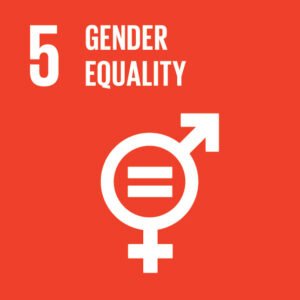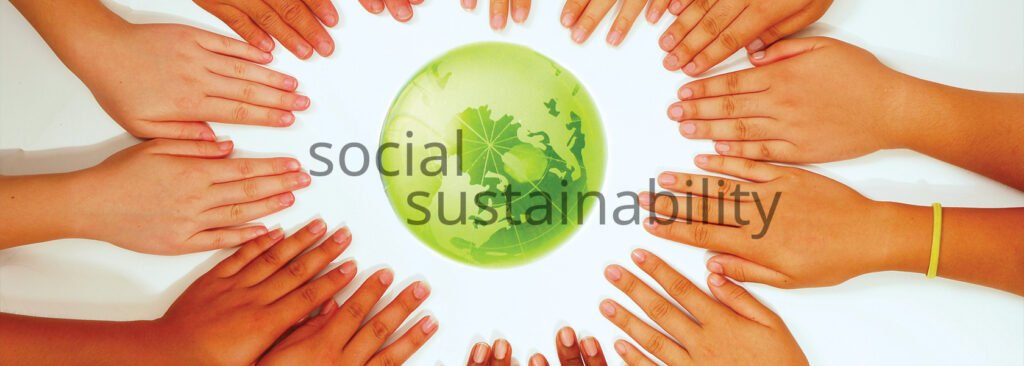It is 21st century. We must be close to gender equality. This is exactly what most of us think. However, the latest gender gap report is in disagreement with this thought. We’re still centuries away from closing the gender gap. But what exactly does gender equality mean? Is it women being able to enter the workforce? Well, it is just one aspect of the UN’s gender equality SDG. Closing the gender gap is a lot more than achieving gender parity in the workplace.
In this article, we’ll explore the true meaning of gender parity, its importance, the progress, and many more.
What is Gender Equality?
Let’s establish the basic definition of gender equality. According to UNICEF, “Equality does not mean that women and men will become the same but that women’s and men’s rights, responsibilities, and opportunities will not depend on whether they are born male or female”. In simple terms, gender should never be a factor that holds anyone back. The similarities and differences of men and women should be valued equally in society.
 At its core, gender equality is both a human right and an integral part of the UN’s sustainable development goals (SDGs). In 2015, the UN formed 17 global goals, of which gender equality is SDG5. Through this, the UN aims to empower women and end all forms of gender discrimination by 2030.
At its core, gender equality is both a human right and an integral part of the UN’s sustainable development goals (SDGs). In 2015, the UN formed 17 global goals, of which gender equality is SDG5. Through this, the UN aims to empower women and end all forms of gender discrimination by 2030.
“But if it’s gender equality, why do the targets only talk about empowering women?” is a question that’s taking center stage these days. The answer lies in history—centuries of inequality. For generations, being male has come with inherent privileges, while women had to fight for even the most basic rights, like voting. Looking back at the history clears why the journey to equality continues.
A Brief History
Historically, women have been associated with giving birth, raising kids, and staying home, while men were free to pursue opportunities outside the home. According to studies, This inequality dates back over 5,000 years. In fact, until the 19th century, women were not even allowed to vote, let alone education, marriage, and other fundamental rights.
The fight for women’s rights and equality began in the 19th century with the women’s suffrage movements. By the mid-20th century, the concept of equality started becoming mainstream. And the Universal Declaration of Human Rights in 1948 affirmed equal rights for all.
These movements also gave rise to feminism—a movement advocating for women’s rights and laying the groundwork for today’s gender equality efforts.
Feminism vs. Gender Equality
Feminism and gender equality are same yet different. Gender equality aims to achieve a state where men and women have equal responsibilities, resources and opportunities. Feminism, on the other hand, focuses specifically on women’s rights to achieve this equality. True gender equality can not be achieved without feminism. It’s a movement that has been at the forefront of equality. Contrary to some misconceptions, feminism isn’t about elevating women above men. It’s about creating a level playing field.
From the first wave of feminism focused on suffrage to the fourth wave that focuses on addressing systemic issues like workplace harassment and intersectionality, feminism has evolved alongside society. It has highlighted the need for gender equality, not just in policies, but in culture and everyday interactions. But it’s 21st century. Women are doing everything a man does. We don’t need feminism and gender equality movements anymore. Let’s look at these numbers.
Why Do We Need Gender Equality?
Even though it’s 2024, women still face a ton of barriers. From education and health care to pay parity and sexual violence, the challenges prevail. These stats paint a clear picture of where we stand now, just 7 years before the SDG5 deadline.
- 1 in 3 women faces sexual violence.
- About 750 million women and girls have been victims of child marriage.
- Inadequate health care related to pregnancy and childbirth leads to the death of 800 women daily.
- The daily number of girls at risk of genital mutilation amounts to 12,000+.
- Almost 2.4 billion women worldwide are not privileged enough to have the same economic rights as men.
- Women earn 23% less than men in the workforce.
I’m sure these stats clearly show the dire need for gender equality in the workplace, society, and culture, even in 2024. However, achieving equality will not only empower women. True gender parity can benefit everyone.

Importance of Gender Equality
Reducing the gender gap is closely tied to sustainable economic development and growth. A report by McKinsey estimates that the progress in gender equality could add $12 trillion to the global economy by 2025. On a societal level, communities that prioritize equality often see higher levels of well-being, education, and even political stability.
- Lowering the gender gap can increase GDP by 8% and 23% in developing and developed countries.
- In countries like India, gender equality in the workforce could add $700 billion to the GDP by 2025.
- Studies show that countries with better gender equality see improved life expectancy for both men and women.
- Closing the gender gap also reduces poverty, as the difference in poverty levels between men and women is significantly higher.
- Promoting equality can reduce the percentage of the global population with food insecurity, as more women are food insecure than men.
The Progress So Far
The past few decades have seen notable strides in achieving gender equality. From increased representation of women in leadership to significant policy changes worldwide, there’s a lot worth celebrating.
However, progress in some areas contrasts with stagnation in others. Especially with Covid and other recent geo-political happenings, progress in developing countries has reversed. According to the gender gap report 2024, the current gender gap stands at 68.5% closed. And the world needs about 134 years before gender equality can be achieved.
Gender Equality in Numbers
- 97% of the 146 countries have closed over 60% of the gender gap.
- The global health and survival gap between men and women has been closed by 96%, followed by the education gap at 94.9%.
- Global gender equality in the workplace stands at 65.7%, a slight increase from 63.5% in 2023.
- Political empowerment gaps have been closed by 22.5% by 2024.
- Iceland tops the Gender gap index and is the only country that has closed the gap by 93.5%.
- 5 out of the top 10 spots in gender equality belong to European countries, while most South Asian countries rank below 100.
- India ranks at 129, closing 64.1% of the gender gap.
State of Gender Equality in India
In India, the gender gap has been closing slowly but steadily. With policies and initiatives such as the Beti Bachao Beti Padhao, India is moving forward to become a gender-equal economy. However, deep-rooted societal norms are the biggest challenge the country faces. They continue to hold women back from having equal access to education, healthcare, the workforce, and political participation.
India ranks 129th out of 146 countries in the Global Gender Gap Report. In terms of health, survival, and economic participation, the country ranks 142nd. However, it ranks comparatively better in terms of educational attainment (112th), highlighting the opportunity for a better rank in workforce participation in the coming years.
What Can We Do?
Achieving gender equality requires everyone to play a role—governments, businesses, and individuals alike. But where do we start?
- Awareness: The first step towards any change is awareness. The more people know the gravity and consequences of gender inequality and the benefits of equality, the more they will participate in empowering women.
- Policy reforms: Governments must enact and enforce laws that ensure equal pay for equal work, protect against workplace discrimination, and guarantee access to education for all genders.
- Corporate responsibility: Companies can promote gender equality by creating more inclusive work environments, offering mentorship programs for women, and actively promoting women to leadership positions.
- Individual action: We, as individuals, can make a difference, too. From educating ourselves and others about gender issues to supporting female-led businesses or advocating for gender-neutral policies, every action counts.
Final Thought
So, are we there yet? Unfortunately, not quite. But the progress we’ve made is undeniable, and it shows that with continued effort, we can close the gender gap. Achieving gender equality isn’t just about empowering women—it’s about creating a more just and balanced world for everyone. The fight has been going on for centuries and will take another century to reach true equality. It is definitely a long journey, but it’s one worth taking.



